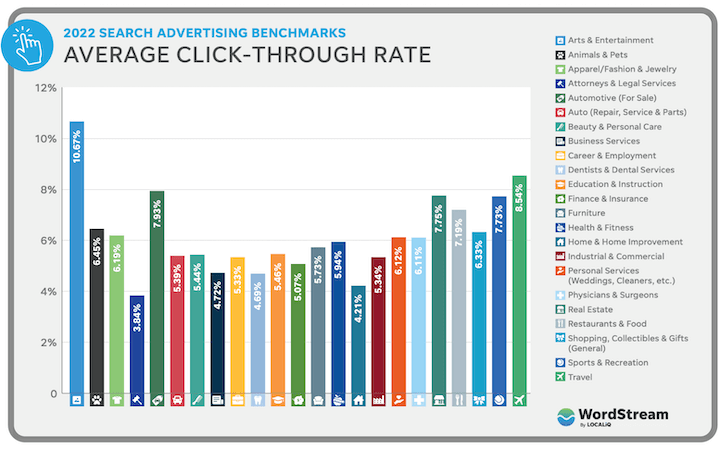I don’t believe AI in marketing or automation within digital marketing platforms is necessarily good or bad. The reality is that we are at a point in the stage of artificial intelligence or “machine learning” where a great degree of human intervention or direction is still required. Is it possible that someday, all of digital marketing will be fully automated? Perhaps, but right now, the key to a successful paid media strategy is that of the individual leveraging the automation in order to get the most out of it. The main point, as with anything in digital marketing, is that every business is different and you have to leverage the tools available to you that are going to help you.
Image source

So it’s not that users are just throwing money away now; the argument is that they have less control to spend it exactly how they intend to. Therefore the platforms themselves are still effective, yet how much of the money is being spent efficiently and exactly how is more unclear than ever.
View the Tweet here.
- What Google Ads Performance Max is and how it works.
- The pros and cons of Performance Max campaigns.
- Perspectives on this campaign type with respect to the age of automation.
What are Google Ads Performance Max campaigns?
Performance Max is a campaign type in Google Ads where you define a goal and provide all of the assets and information about what you are advertising, and Google then auto-generates ads that can serve across all of its available placements. That means you can run ads on Search, Maps, Display, YouTube, Gmail, and Discovery networks all from a single campaign.
Everything these days appears to either be “smart” or have some form of “machine learning” involved. Whether it’s a phone, a TV, or a fridge, our transfer of power to the machines may be well on its way.
How do Performance Max campaigns work?
In the past, I have commented on the drawbacks of allowing companies that you give money to, to control how you give them money— but does all of this automation really have to result in some nightmarish marketing Black Mirror episode? Or is it truly a revolutionary step forward for businesses marketing online? Perhaps the answer lies somewhere in the middle.
- Marketing objectives and goals
- Budget
- Creative assets (text, images, video)
- Geo-targets
- Feeds (optional)
- Google My Business
- Google Merchant Center
- Dynamic Ads feed
- Business data feeds
- Audience signals (optional)
- First-party Audiences (lists)
- Google Audiences (manually targeted)

Power users who have been running ads for a long time are comfortable with the platforms as they exist and aren’t always receptive to radical changes that alter their day-to-day management. But it is possible that Performance Max is actually good for the long run. If it becomes proven to work for clients or the marketers themselves, these criticisms will fade and there will be a greater acceptance that these tools are superior to controlling every button and switch yourself.
When to use Google Ads Performance Max
The biggest question many have in regards to Performance Max is whether or not it should replace their current campaigns and be the sole source of performance in the account. The quick answer is no. Performance Max is best used as a supplement to your pre-existing efforts. And since it is a goal-based campaign type, it is best used when you have specific conversion goals (conversion goals is a relatively new feature from November 2021) like driving online sales or generating leads) and when you aren’t limited by which channel your ads appear on.
View the Tweet here.
- Don’t have time or resources to optimize for each channel.
- Find it challenging to optimize various campaign types for one location.
- Don’t have much budget but want exposure to all Google Ads inventory.
- Have an unlimited budget and want to unlock new, unexpected customer segments.
- Wish to explore new geo markets.

The pros & cons of Performance Max
Performance Max essentially takes responsive ads and smart campaigns to the next level, combining these features all in one place. In order to run them, you need to provide Google with your:
Pros of Performance Max
Whenever more automation is introduced to digital marketing platforms, there are three major avenues that people within the space typically go:
- Makes advertising on Google easier for novice users: The idea of one campaign where you can achieve all of your marketing goals without having to set up several other campaigns appeals to those who want to circumvent the learning curve.
- Allows advertisers to focus on strategic performance drivers: Creative optimization, campaign planning, and PPC reporting are much easier to obtain using Performance Max. With a multi-campaign strategy, you may have responsive search ads, responsive display ads, etc. with varying creative and messaging that you’d have to compile from different places or analyze individually. With Performance Max you can test and assess all of these things from one place, allowing you to make strategic marketing decisions faster.
- When used correctly, could provide impressive results: I caveat this one with “when used correctly” because if you have the correct inputs in place with clearly defined goals then Performance Max should work for you (in theory). By correct inputs, I’m mostly referring to what you tell Google to look for in regards to audience targeting. I would suggest using first-party data—that is, if you have a list of existing customers, give that to Google instead of relying on the AI to learn who your target audience is. It may save you quite a bit of money to do this.
The counter-argument is that “wouldn’t novice advertisers spend more in the past when everything was less automated and more complicated?” The answer is both yes and no. Yes, novice advertisers would try and fail and waste money in doing so along the way. However, with automation, it has never been easier to spend more money, deliver some form of return, and continue to use the platform.
The irony of Performance Max is that it inherently should appeal to novice users, yet many of the cons or drawbacks come into play when a user makes “novice” mistakes.
Cons of Performance Max
Feedback that I have heard about on Performance Max has been generally positive with many of the drawbacks being the ones that I will mention next.
- You need clear goals: This ties into the previous point that if you are unclear in your marketing goals or at least the conversion action goals that you are telling Google to optimize for, then your Performance Max campaigns will not perform the way you want them to. This also applies to the quality of ads or feeds. The AI is not going to make your ads magically better than your competitors, you have to do everything in your power to place the best creative inputs into the system.
- Less control: The basis of many of the criticisms surrounding smart campaigns, automated bidding, or anything remotely automated is that it takes control away from the advertiser in some respect. Those who like to have control over every detail of how their ads are being served may be resistant to the continued automation of their jobs.
- Limited visiblity: Though Google is gradually adding new reporting features, the general consensus here is that it’s hard to get individual insights on each campaign or asset combination.
- Machine learning doesn’t mean full automation: Relying too much on machine learning or believing that it will do the job with minimal effort on your end is a mistake you don’t want to make in Google Ads. If you are not diligent with how you set up Performance Max you will see yourself wasting quite a bit of money. I have included this as a “con” because I believe there is a discrepancy between how Google markets these products and the expectations of novice users.
A lot of the angles or arguments you may get from folks like me who have been working within these digital platforms professionally for many years may air on the side of cynicism but does that mean we’re right or just stuck in our ways?
Polarized perspectives on Performance Max

- Those who love it and look to adopt it to help them either manage themselves or clients easier.
- Those who hate it because they hate change or fear that clients inevitably won’t need their expensive expertise anymore.
- Those who see through a lot of what these tech giants claim to be about.
PPC influencer Jyll Saskin Gales is one such proponent of this school of thought. In a recent Tweet, she shared that though it took two months, her Performance Max campaign hit the sweet spot, resulting in a spike in conversions and her lowest CPA yet.
Perspective #1: It just needs a little time
View the Tweet here.
Here is a look at the two ends of that spectrum.
They reduce visibility (think search terms report) and they say “this marketing thing on our platform is so hard…just give us the keys and we’ll deliver better results for you.” Those who have been in this industry long enough know that Google and Meta’s primary concern above all else is revenue. If the advertiser is in the dark about how very specifically their money is being spent, or if they lack the controls to really refine how that money is spent, they will inevitably spend more money.
The results of Google’s Performance Max case study—take with a grain of salt, although I don’t doubt the validity of its claims.

If you want to give Performance Max a try, you can find a helpful tutorial, along with other helpful resources, in our list of free Google Ads training courses. If you’re already using Performance Max, let us know what you think of it in the comments below!
Perspective #2: It’s all about the Benjamins
If you want to give Performance Max a try, you can find a helpful tutorial, along with other helpful resources, in our list of free Google Ads training courses. If you’re already using Performance Max, let us know what you think of it in the comments below!
If you want to give Performance Max a try, you can find a helpful tutorial, along with other helpful resources, in our list of free Google Ads training courses. If you’re already using Performance Max, let us know what you think of it in the comments below!
The verdict?
Google’s latest venture into this realm of automation, Performance Max Campaigns, were released in November of last year and have been built up to be the next evolutionary step in digital advertising on the platform, but is it everything that it was hyped up to be? Is more automation the best decision for you or your business? In this post, I’ll break down:
In his review on Performance Max, Dean Long says this campaign type is also best for advertisers who:






